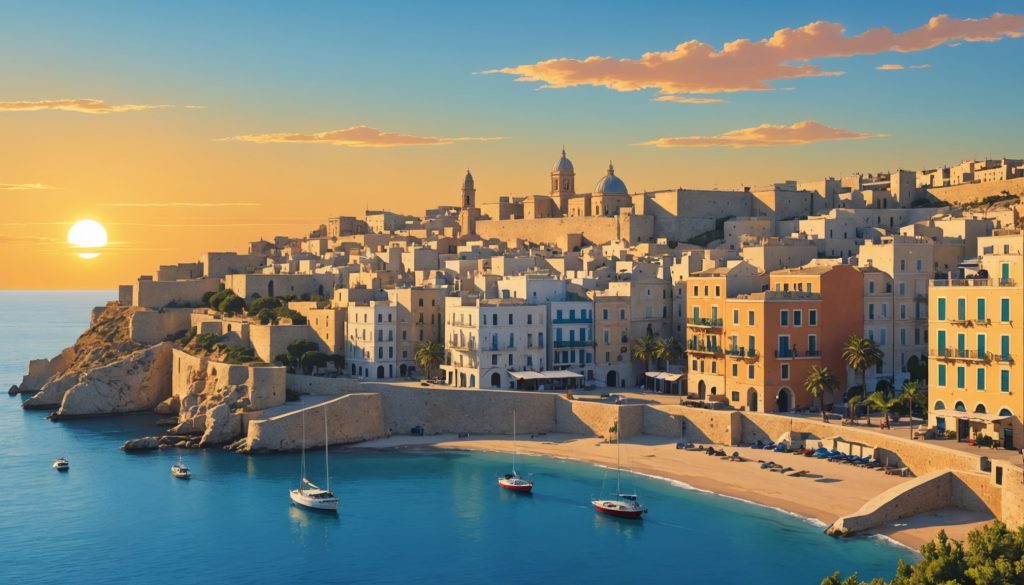Real Estate Investment Opportunities in Malta: A Comprehensive 2025 Outlook
Estimated Reading Time: 6 minutes
Key Takeaways
- Malta’s real estate market has experienced a 53% increase in property prices since 2015.
- Investors can expect annual capital appreciation of 5-7%, with high rental yields in prime locations.
- The market is supported by economic stability and strong demand driven by foreign investments and expatriates.
- Sustainability trends are reshaping property investment opportunities.
- Potential risks include market oversupply and regulatory changes affecting ownership restrictions.
Table of Contents
- Market Overview
- Investment Trends & ROI Projections
- Legal & Tax Considerations
- Property Types & Prices
- Risks & Challenges
- Financing & Mortgage Options
- Citizenship/Residency Benefits
- FAQs
Market Overview
Malta’s real estate landscape has shown remarkable resilience and growth, making it an attractive destination for international investors. The island’s strategic Mediterranean location, combined with its EU membership, contributes to its growing economy and the buoyancy of its property market.
- Continuous property appreciation backed by limited land availability.
- Strong demand from both local and international buyers fuels market stability.
- The economy is bolstered by increased foreign direct investments, further enhancing the real estate sector.
Investment Trends & ROI Projections
Investors in Malta can anticipate lucrative returns based on current market trends:
- Capital Appreciation: Historical averages show an annual increase of 5-7% in property values. This trend is projected to persist through 2025.
- Rental Yields: Areas such as Sliema and St. Julian’s present competitive rental yields, reflecting high demand trends.
- Strong Growth Potential: Maisonettes and terraced houses are highlighted as profitable investment types, displaying significant price growth.
Legal & Tax Considerations
Navigating the legal landscape in Malta is critical for foreign investors:
- Foreign Ownership: Properties in Special Designated Areas (SDAs) often provide exemptions from specific restrictions, making them an attractive option for international buyers.
- Tax Incentives: Investors can benefit from various government incentives, including reduced tax rates for first-time buyers and restoration projects.
It is advisable to engage a local legal expert to ensure compliance with all regulations and to optimize tax benefits.
Property Types & Prices
The Maltese real estate market offers a variety of property options:
- Average Prices: Premium locations like Sliema anticipate prices around €4,000 per square meter in 2025.
- High-Demand Properties: Maisonettes and terraced houses are in particular demand and show potential for above-average returns.
- Special Designated Areas: Properties categorized under SDAs often attract foreign buyers and yield better long-term prospects.
Risks & Challenges
While the Maltese real estate market presents various opportunities, potential investors should be wary of certain risks:
- Market Oversupply: An increase in housing supply could dampen prices temporarily, particularly in non-exclusive markets.
- Regulatory Changes: Potential alterations in legislation regarding foreign ownership could impact existing investment strategies.
- Economic Vulnerabilities: Fluctuations in interest rates and broader economic factors may influence the local investment climate.
Financing & Mortgage Options
Investors should explore financing options available in Malta:
- Local Banks: Many banks in Malta offer competitive mortgage rates, which can benefit foreign investors.
- Loan-to-Value (LTV) Ratios: LTV ratios typically range between 70-80% for residential properties, depending on the borrower’s profile and property type.
In-depth research and consultations with financial advisors can aid in securing the best financing solution for property investments.
Citizenship/Residency Benefits
Investing in real estate in Malta can yield significant residency and citizenship advantages:
- Investment Residency Program: Qualifying investments could lead to obtaining residency or citizenship status, offering enhanced mobility within the EU.
- Lifestyle Incentives: Malta’s attractive lifestyle, coupled with its favorable tax regime for residents, makes it an appealing prospect for expatriates.
FAQs
Q: What is the projected growth rate for property prices in Malta over the next few years?
A: Property prices are expected to grow by 5-7% annually, continuing a positive trend established over the past several years.
Q: Are there any significant risks to investing in Maltese real estate?
A: Potential risks include market oversupply, regulatory change, and economic fluctuations, all of which investors should carefully assess.
Q: How can foreign investors navigate legal issues in Malta?
A: It’s advisable for investors to consult with local legal advisors to understand regulatory frameworks and ensure compliance.
Q: What types of properties are currently in demand in Malta?
A: High-demand properties include maisonettes, terraced houses, and those located in Special Designated Areas (SDAs).
Conclusion
Malta’s real estate market remains an attractive option for international investors in 2025, characterized by impressive growth potential and robust demand. By considering sustainability trends, leveraging local expertise, and being mindful of potential risks, investors can successfully navigate this dynamic market.
For more insights on real estate investment opportunities, visit Realty Invest Navigator.

